
Labrador Retrievers love water so much, they’re practically fish! We’ve got a bunch of fun facts about this loveable, water-treading breed for you to dive into, as well as some great, active games for you and your pal to play!
History of the Labrador Retriever
The Labrador Retriever’s closest ancestor was from Newfoundland, a coastal province in Canada near the Labrador Sea. These dogs had black coats, sometimes white crests on their chests, and white feet. Portraits of them look like a cross between a modern Lab and a Border Collie.
Like Labradors, the Newfoundland breed had webbed toes, a two-layered, water-repellent coat, and a strong, broad tail that works like a rudder in the water, making it a superb swimmer.
The Labrador Retriever has grown to be the most popular dog breed in America.
Recognizing the dogs’ agility in the water, Newfoundland fishermen began using them to retrieve fishing lines and nets. The fishermen found that these dogs had great endurance and strength, so some used them to tow barges.
For a while, these trusty fishing dogs waned in popularity in Canada due to a tax imposed on dog owners. Fortunately, British travelers coming to port decided to bring the dogs to England. The breed was refined by English hunters to be better suited for retrieving game and named the Labrador Retriever. Since the 20th century, the Labrador Retriever has grown to be the most popular dog breed in America.
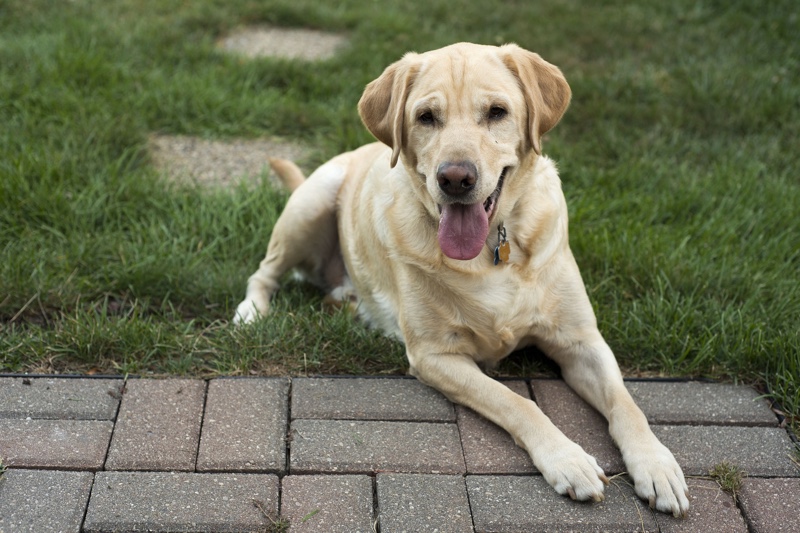
Physical Traits of a Labrador Retriever
Labs have thick, sturdy bodies, broad heads, and long, otter-like tails that help them to steer themselves in the water. Their webbed toes make for better paddling and keep snow from clumping up between them. They grow to be between 21 and 24 inches at the highest part of their back and may weigh 50-80 pounds.
The outer layer of the Labrador’s coat is straight, short, dense, and slightly oily. It’s meant to whisk away water. Labs have an inner coat that is thick and soft to protect their skin from wetness and cold temperatures. Their special double coat makes them waterproof!
Labrador Retrievers may be black, chocolate, or yellow, and all colors can appear in a single litter. The nose of the dog will match its coat.
Labs usually have brown eyes. The exception to this is that some Chocolate Labs have hazel eyes.
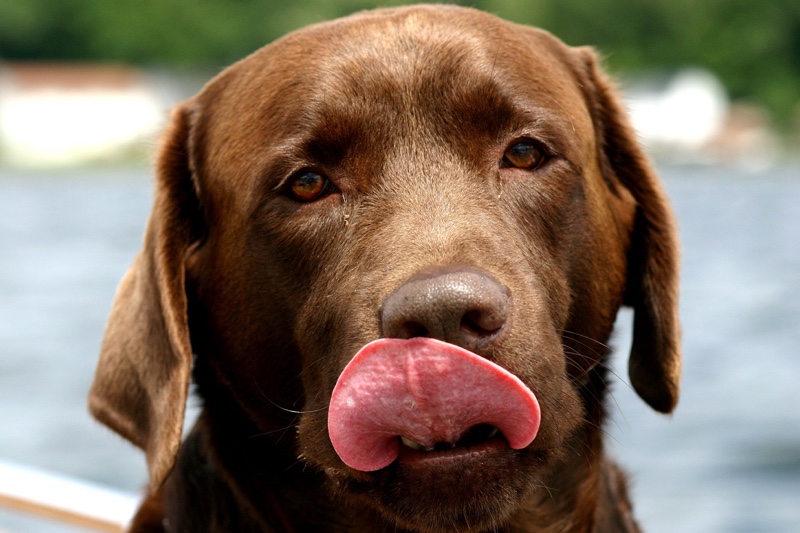
The Labrador Retriever Personality
Labradors are known for their gentleness, tolerance, and intelligence. Their easy-going nature is what makes them the top choice as American family dogs. They are generally very good with kids and other canines. Of course, being completely adorable probably contributes to their popularity too!
As natural hunters, Labs are also known to be active and love exploring. Regular exercise is a great way to let out some of their energy and help them maintain a healthy weight. With lots of playtime and proper training, even high-energy Labs can be calm and obedient.
How to Care for Your Lab
Labradors’ short, sleek, resistant outer coats don’t require much grooming, but it never hurts to give them a good brushing or a bath! A coat cleaning every once in a while will help it look shinier and healthier.
Active play and exercise are very important in the Labrador’s regular care regiment. Labs tend to pack on extra pounds quickly if they are sedentary or overfed. Obesity is one of the most common health issues for Labradors, and hypothyroidism and diabetes are also not uncommon for the breed.
When a dog becomes overweight, exercise can be tough on their joints and cause them pain. It’s always better to prevent their weight from becoming an issue than to let it get out of hand and have to try to slim them down later.
Though treat-giving is a very effective positive reinforcement training method, you may want to limit your Lab’s treats and reward them instead with praise and cuddles. Moderating their treats and making sure to measure the proper amounts of food at mealtime are other ways to keep their weight in check. You can also opt for dog-safe fruits and veggies as an alternative to higher-calorie, processed treats.
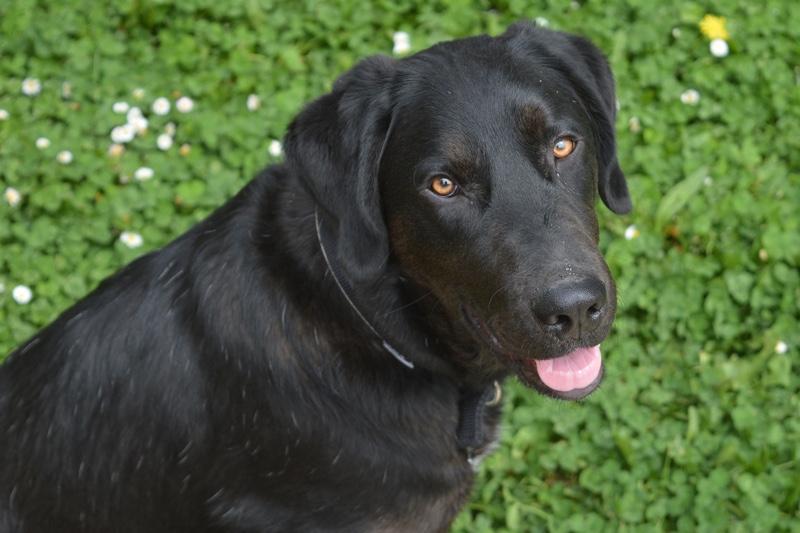
Other Common Health Problems
According to our claims data*, our customers’ top-reported health issues for Labs include ear infections, arthritis, cancerous and other unspecified growths, skin irritations, and allergies.
Labs are also known to develop cataracts and have troubles with their hips, knees, elbows, and shoulders. Annual and wellness exams for these doggies should include check-ups on their eyes and joints.
Important wellness procedures can be covered by a dog insurance plan. Start a quote for your best friend.
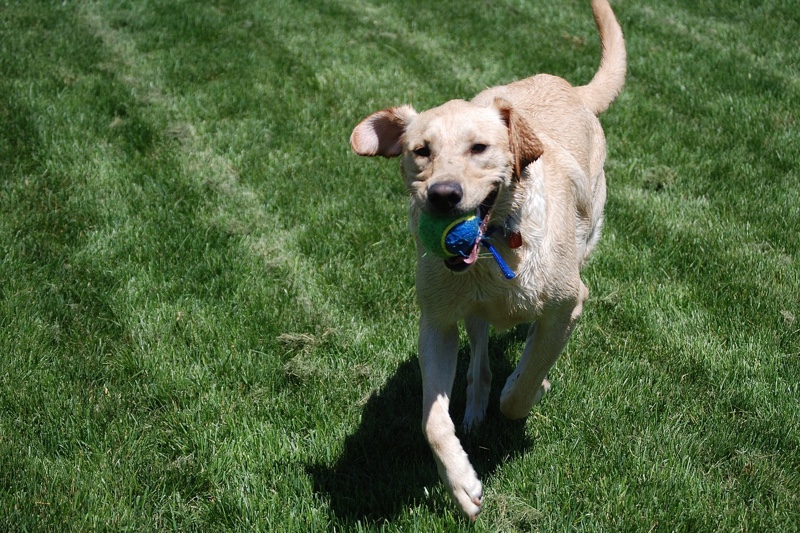
Great Games for Labs
Try doing these activities with your Labrador Retriever for fun and exercise rolled into one!
Go Fetch!
These natural retrievers love to chase after toys and bring them back – in the yard or the water! Balls, rope toys, ring toys, Frisbees, and dummies will all work well for a game of fetch.
Splashing Around
Labs love a good swim, even when a retrieving game isn’t involved. Take them to the beach, a lake, a pond, or a backyard pool and let them paddle around. If you’re up for a swim too, nothing beats splashing along with your Labrador. Playing a game of fetch or chase in the shallow waters near shore can also be lots of fun.
When letting your Labrador Retriever in the water, watch them like you’d watch a small child. Be sure they have a way out and don’t look like they’re panicking or struggling. Labradors’ swimming instincts make most of them relaxed in the water, but young dogs, old dogs, and dogs that have not yet built up their stamina will get tuckered out sooner and need easy access to shore. Just to be safe, you may want to investigate purchasing a dog life jacket.
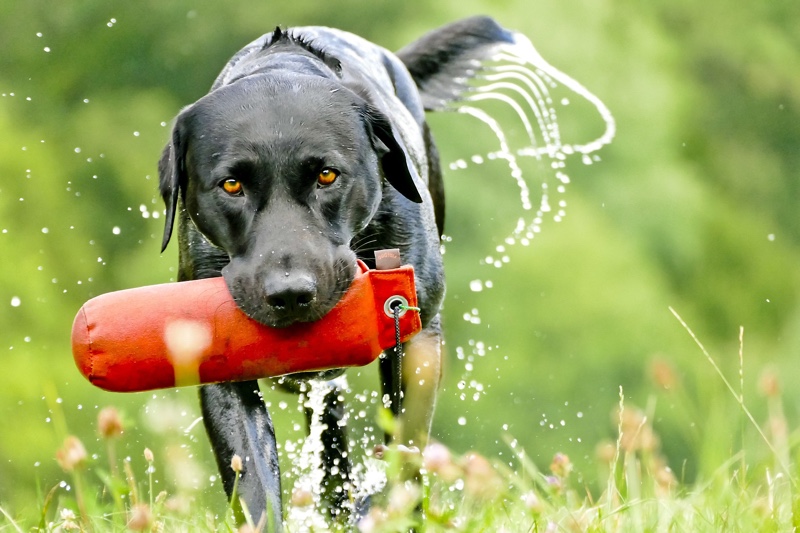
Nose Work
Don’t be fooled by the “work” part – this is a great recreational activity for Labradors. Nose work, or scent work, involves hiding objects marked with various scents for your dog to track.
The activity can be especially stimulating for Labrador Retrievers because of their natural drive to hunt, but any breed of dog may enjoy it. Through their evolution as humans’ working companions, dogs have been hard-wired with a love to learn, be challenged, and feel productive.
How to teach your Lab to do nose work:
- Get scents.
Essential oils like anise, birch, and clover are great choices for nose work. You can douse the object with the oil or inject the scent using a special syringe called a scent injector, which you should be able to find at your local sporting goods store, or online.
- Choose the mark.
You’re going to need objects to mark the scents with as well. Dummies work great for essential oils. Get a few and douse each one with a different smell! You can use plush dog toys, pieces of cloth, or strips of leather for scent marking too.
- Hide-and-seek.
Once you’ve chosen the objects for your dog to track, mark them with scent, hide them in the yard or around the house, and watch your pup hunt for them! It can also be fun to leave a scent trail to the objects. To do this, drag the scent-marked objects along the ground leading up to their hiding place, or squeeze some drops of essential oil on the way to the chosen hiding spot.
*Internal Claims Data, 2015
Helpful resources for pet parents
Browse categories
-

All About Cockapoos
With a great personality and a tendency to shed very little, it’s no wonder Cockapoos have been popular for more than fifty years.
-

The Truth About Pet Health Insurance
Get the facts on pet insurance before you enroll your pet.
-

Fun Facts About Boxer Dogs
Smart, goofy, and loyal, Boxers are a lively breed and can be a fun addition to the family. And while their faces often express a sense of worry, their hearts are full of affection and fun – and a little bit of mischief.

Browse Categories
(opens new window)
